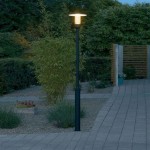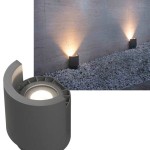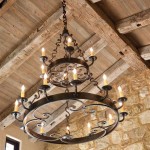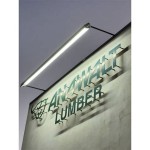Motion Sensors For Lights Outdoor
Motion sensors, often referred to as motion detectors, are invaluable tools for enhancing security, convenience, and energy efficiency in outdoor lighting environments. These devices utilize technology to detect movement and trigger actions, such as activating lights, sending alerts, or recording footage. Motion sensors for outdoor lights are commonly found in residential, commercial, and industrial settings, offering a wide range of applications.
How Motion Sensors Work
Motion sensors operate on the principle of detecting changes in the surrounding environment. They typically rely on one or more of the following technologies:
Passive Infrared (PIR) Sensors:
These sensors detect changes in infrared radiation emitted by warm objects, such as humans or animals. When movement disrupts the infrared pattern, the sensor triggers an action.Microwave Sensors:
These sensors emit microwave signals and measure the time it takes for the signals to return. Changes in this return time, caused by movement, trigger the sensor.Ultrasonic Sensors:
These sensors emit ultrasonic sound waves and detect changes in the reflected waves. Movement disrupts the pattern of reflected waves, activating the sensor.Dual Technology Sensors:
These sensors combine two or more technologies, such as PIR and microwave, to improve accuracy and reliability. They are less susceptible to false triggers caused by environmental factors like wind or rain.
The selected technology influences the range, sensitivity, and detection pattern of the motion sensor. For instance, PIR sensors are generally effective at detecting movement within a cone-shaped field of view, while microwave sensors have a wider coverage area.
Benefits of Motion Sensors for Outdoor Lights
Motion sensors offer several advantages for outdoor lighting applications:
Enhanced Security:
Motion-activated lights deter intruders by illuminating areas when movement is detected. This creates an immediate sense of awareness and discourages potential criminal activity.Convenience:
Motion sensors eliminate the need to manually turn lights on and off. They provide automatic illumination when needed, ensuring safety and visibility in areas with limited natural light.Energy Savings:
By only activating lights when necessary, motion sensors significantly reduce energy consumption compared to traditional lighting systems. This translates into lower utility bills and a reduced carbon footprint.Extended Bulb Life:
The reduced usage due to motion activation extends the lifespan of light bulbs, reducing replacement costs and minimizing waste.Increased Safety:
Motion-activated lighting provides illumination for pathways, entrances, and other areas that might be dark or hazardous at night. This minimizes the risk of tripping, falls, and other accidents.
Choosing the Right Motion Sensor
Selecting the appropriate motion sensor for outdoor lighting depends on several factors, including:
Coverage Area:
Consider the size of the area to be illuminated and choose a sensor with a suitable range.Sensitivity:
Adjust the sensitivity setting to minimize false triggers caused by small movements, such as swaying branches or passing animals.Detection Patterns:
Optimize the detection pattern based on the specific needs of the location. For example, a wide-angle sensor might be suitable for a driveway, while a narrow-angle sensor might be better for a doorway.Technology:
Consider the advantages and drawbacks of different technologies, such as PIR, microwave, or dual technology.Environmental Factors:
Take into account factors like ambient light conditions, temperature variations, and potential interference sources, as these can affect the performance of the sensor.Compatibility:
Ensure that the motion sensor is compatible with the existing lighting system, including the type of bulbs and wiring.
With careful consideration of these factors, you can choose a motion sensor that effectively meets your outdoor lighting needs, enhancing safety, convenience, and energy efficiency.

The Best Outdoor Motion Sensor Lights In 2024 Popular Science

Discover The Benefits Of Outdoor Motion Sensor Lights Staysafe Org

Auraglow Pir Motion Sensor Up Down Outdoor Wall Security Light Warminster Stainless Steel Led Lighting

Best Outdoor Motion Sensor Lights 2024 Security

Lepro 20w Security Lights Outdoor Motion Sensor 1700 Lumen Pir Light Ip65 Waterproof Flood

Outdoor Motion Sensor Lights Lamps Plus

Philips Hue Outdoor Motion Sensor Review Macrumors

Defiant 180 Degree Motion Sensor White Outdoor Security Light Df 5416 Wh A The Home Depot

Up And Down Pir Motion Sensor Wall Light For Outdoor Use

Best Motion Detector Lights Of 2024 Safewise







